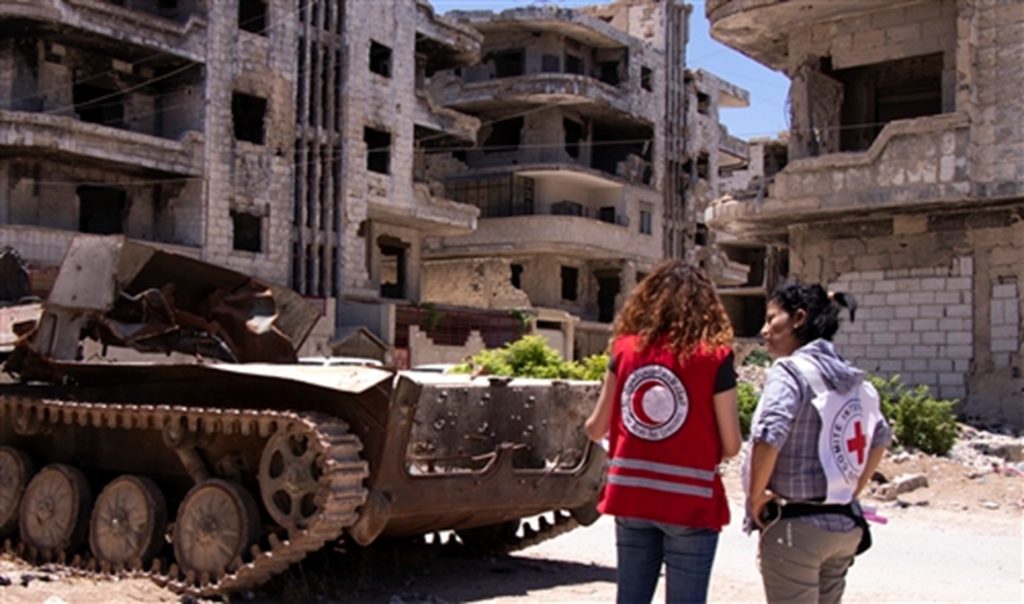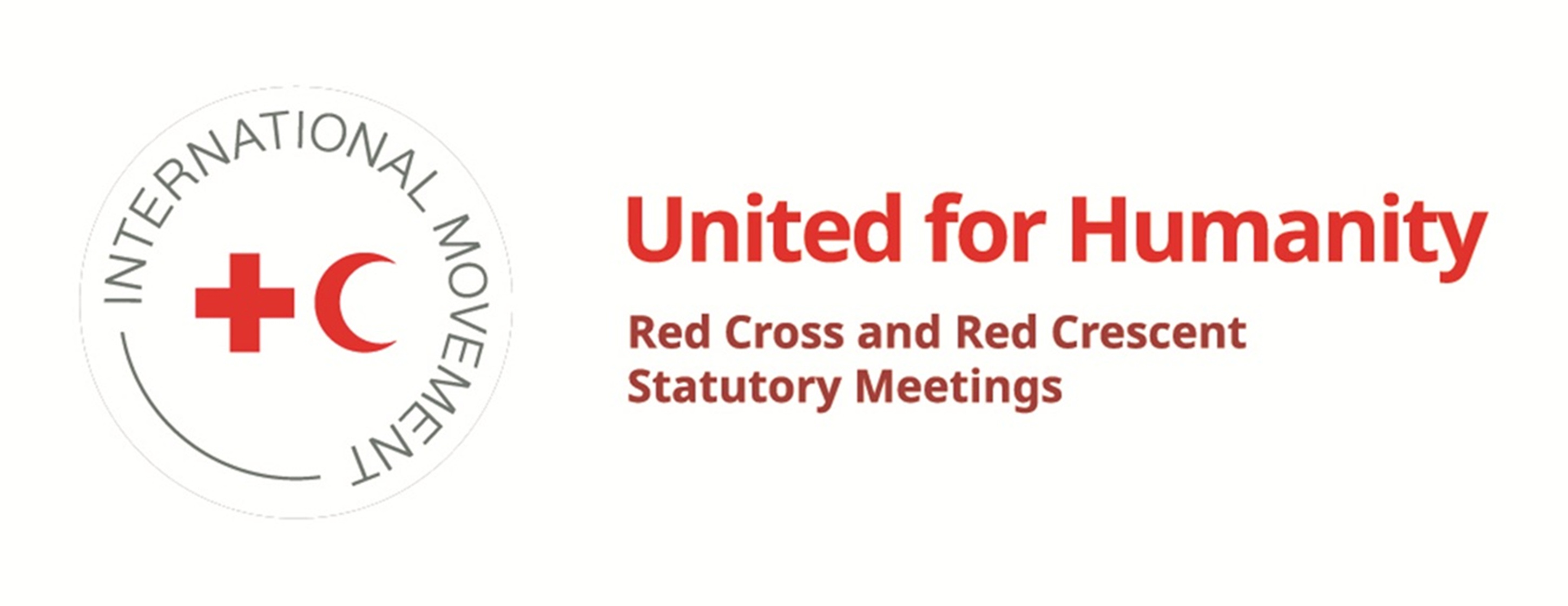The Movement strides towards a new resolution on IHL and weapons
By Heidi Kandiel, ICRC
In the International Red Cross and Red Crescent Movement, we know just how devastating the effects of weapons on civilians can be. It is our shared responsibility to recall that under IHL, the right of parties to an armed conflict to choose means and methods of warfare is not unlimited – any (new) means or methods of warfare must be capable of being used and must only be used in compliance with IHL.[1] The Movement has played a vital role in promoting adherence to these rules through mobilizing political will and resources, promoting awareness of the effects of weapons of concern, and responding to them, thereby safeguarding human life and dignity. Past Council of Delegates resolutions, like the ones adopted in 2005, 2009 and 2013 emphasized the severe human toll incurred by certain weapons and described the Movement’s unified efforts to address their humanitarian impacts.
Despite notable progress, the growing risk of nuclear weapon use, the devastating effects of urban warfare, including the use of heavy explosive weapons in populated areas, and the severe consequences of antipersonnel mines and cluster munitions underscore the urgency for continued action. In addition, the proliferation of poorly regulated arms and ammunition transfers, coupled with the growing significance of new technologies of warfare and their use in novel domains, such as cyberspace and outer space emphasize the pressing need to address complex humanitarian, legal, and ethical dilemmas that arise. Faced with these challenges, the Movement must renew its commitments to address pressing concerns regarding the use and development of weapons, ensuring the protection of civilian lives and dignity, and upholding IHL.
At the 2024 Council of Delegates, the International Committee of the Red Cross (ICRC) – in consultation with the International Federation of Red Cross and Red Crescent Societies, and National Red Cross and Red Crescent Societies – will present a draft resolution on weapons and IHL. The draft resolution calls for renewed commitments from all components of the Movement to confront pressing concerns regarding weapon development and use. It addresses seven categories of weapons, each demanding urgent attention and concerted action, and supports the project to develop a digital emblem.
First, the resolution highlights the growing risk posed by nuclear weapons and calls on states to adopt and implement relevant treaties, like the Treaty on the Prohibition of Nuclear Weapons. It also calls on the Movement to encourage states’ efforts in implementing the 2022–2027 Action Plan. Second, it underscores the importance of upholding absolute prohibitions on chemical and biological weapons, and encourages the Movement to continue developing assistance and response capacities in the event of their deliberate or accidental deployment.
Third, with regard to conventional weapons, the resolution highlights the need for states to prioritize the human cost of arms transfers decisions. It calls on them to incorporate IHL compliance as an explicit criterion and enhance risk mitigation efforts. The resolution also encourages the ICRC and National Societies to support states in these endeavors in accordance with their respective mandates. Fourth, the resolution urges the Movement to renew their efforts in implementing the 2009 Strategy on Landmines, Cluster Munitions, and Other Explosive Remnants of War to address the long-standing threats associated with their use, including indiscriminate effects and high level of casualties. It also calls on states to adopt relevant international legal instruments to prohibit these weapons and promote the universalization of these legal instruments. Fifth, it emphasizes a separate resolution on “war in cities”, which will be adopted to address the devastating humanitarian consequences of urban warfare, including the use of explosive weapons in populated areas.
Sixth, the resolution calls on states to address the humanitarian, legal, and ethical risks posed by new technologies of warfare, emphasizing the importance of ensuring compliance with IHL. It also calls on the Movement to address the risks posed by autonomous weapon systems (AWS). It calls on states to negotiate and adopt new legally binding international rules by 2026, prohibiting unpredictable AWS and those targeting humans, and restricting the development and use of all other AWS to protect civilians and combatants and prevent dire consequences for humanity. Finally, the resolution welcomes the ICRC’s ongoing research and consultations on a digital emblem, in particular among the Movement, which aims to adapt the distinctive emblem, as protected under IHL, to cyberspace.
The upcoming 2024 Council of Delegates presents a critical opportunity for the Movement to reaffirm its commitment to addressing the human cost of weapon use and development. By adopting this resolution, the Movement can continue to play a crucial role in advancing humanitarian disarmament efforts worldwide. Through collective action and advocacy, the Movement can work towards a future where the devastating impact of weapons on civilians is minimized and the principle of humanity is upheld in times of conflict.

Find out more
2024 CoD draft zero resolution on weapons and IHL
2024 CoD background document on weapons and IHL
ICRC statement at the First Committee General Debate on all disarmament and international security agenda items, 78th UN General Assembly, 11 October 2023
[1] Additional Protocol I, Article 36.
The International Committee of the Red Cross, the International Federation of Red Cross and Red Crescent Societies, and the Standing Commission of the Red Cross and Red Crescent, in its function as Trustee of the International Conference of the Red Cross and Red Crescent (the Conference), cannot be held responsible or liable in any manner for any user-generated content or posts on this Database. In the event that the Website team considers any post or content to be incompatible with the Fundamental Principles of the International Red Cross and Red Crescent Movement and/or with the objectives of the Conference, it reserves the right to remove such content.




